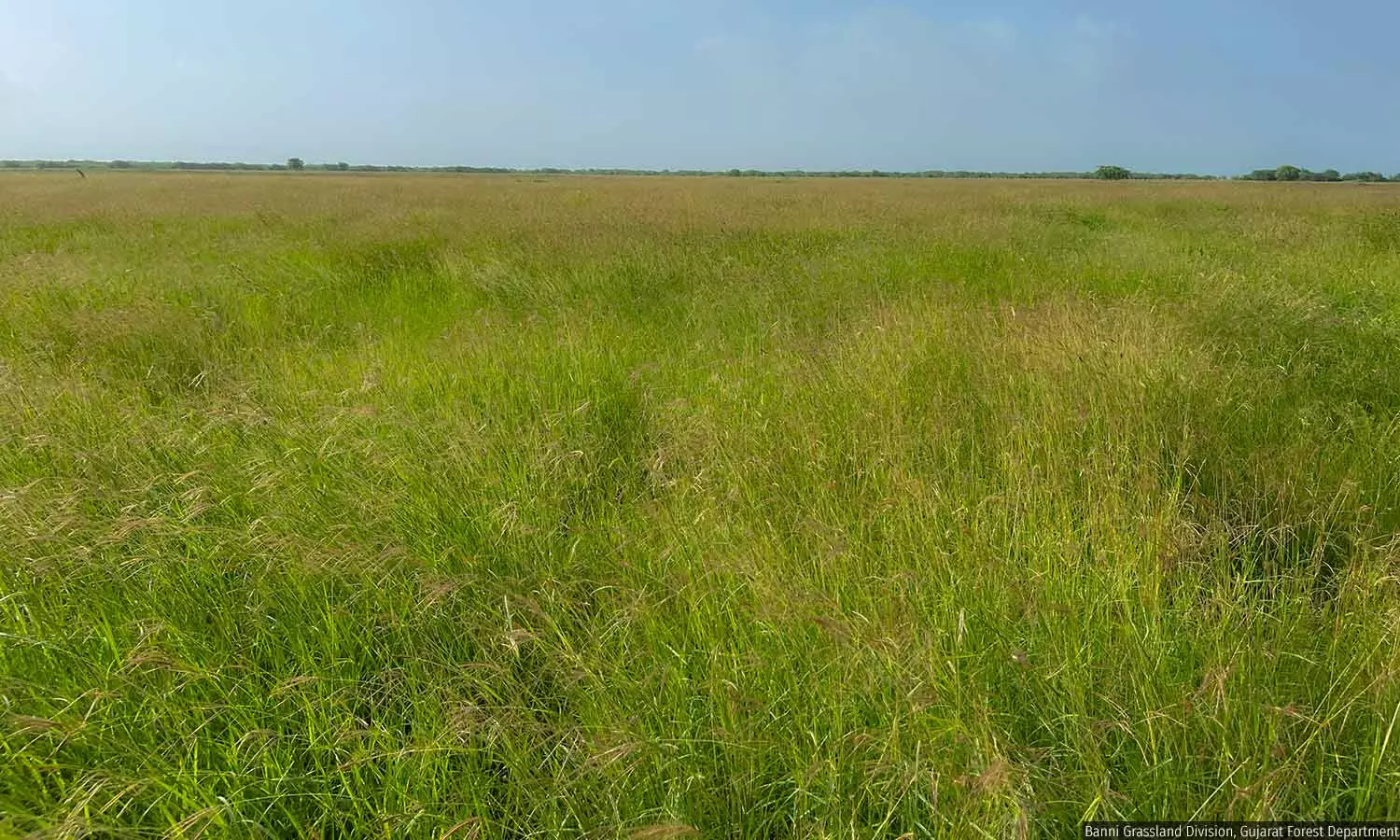13,000 hectares of Banni Grasslands restored ahead of setting up Cheetah breeding center
December 21, 2023
Kutch: The forest department has restored 13,000 hectares of Banni Grasslands, recognized as India’s largest grassland, covering a total area of 2.5 lakh hectares. In the restoration efforts, quality grass was grown, including the Jinjwa species, and for the first time, seeds were dispersed across the grassland using drones. The Central government has given approval for setting up a cheetah breeding conservation center in these grasslands.
The goal is to restore an additional 70,000 hectares over the next decade. Officials report that the restoration has positively impacted the entire ecosystem, enhancing biodiversity and soil moisture. This has led to an increase in grasshopper populations, benefiting various bird species, including the bustard family and harriers.
Chari Dhand, a part of the Banni grassland, attracts 40 to 50,000 birds annually due to the abundant food resources available. Sandeep Kumar, Chief Conservator of Forest, Kutch circle, expressed confidence that the restored Banni grassland will significantly support the cheetah rehabilitation program. The population of chinkaras, a crucial prey base for cheetahs, has notably risen, alongside an increase in other herbivores and small carnivores such as blackbuck, hyena, and fox, contributing to a diverse fauna and flora for the cheetah breeding program.
The current grass productivity in Banni stands at 5,000 kg per hectare. Kutch being, home to the highest population of livestock (20 lakh) with approximately 25,000 dependent animal breeders, benefits significantly from this grassland. Since 2019, the forest department has distributed 2,100 tonnes of grass to the local community.
To increase grass production in Banni, the department has undertaken initiatives such as constructing over 80 ponds for rainwater conservation, removing encroachments on 11,000 hectares of land used for farming, and clearing around 12,000 hectares. The changing rainfall patterns in recent years have also contributed to improved grass production in the region. DeshGujarat
Related Stories
Union govt approves Cheetah breeding center in Banni Grasslands of Kutch
PM Narendra Modi releases wild Cheetahs at Kuno National Park in Madhya Pradesh
Cheetahs reintroduced for public view at Sakkar Bag Zoo
Modi dedicates Cheetahs and talks about it(VIDEO)
Recent Stories
- Gujarat govt expands Jurisdiction of Ahmedabad City police
- Authorities carries out demolition drive in Rakhial; over 20 illegal units razed
- PM Surya Ghar Yojana: ₹2,362 Crore Subsidy Provided to 3.03 Lakh Consumers in Gujarat
- Six New Check Dams Built for Rs. 18 Crore on Meshvo, Khari Rivers Inaugurated
- Threat over India-Pakistan videos; Two arrested, Pak links emerge
- Himmatnagar: New overbridge on NH-48 likely to open next month
- 8 Factors to Consider When Choosing a Term Deposit
